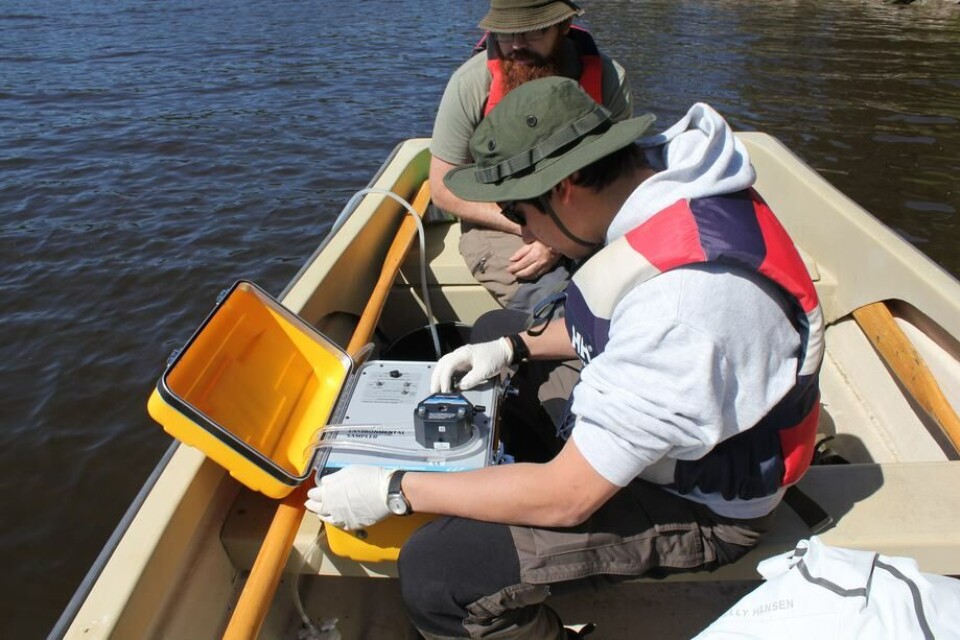
Detecting infection before fish get sick
Researchers in Norway are now testing the use of eDNA for detection of contaminants that can affect salmon and rainbow trout. By using this method, they hope to detect contaminants in the water before they reach the fish.
eDNA (environmental DNA) is a new principle where genetic material (DNA and RNA) from both macro and microorganisms is extracted from water samples and detected by molecular biology methodology.
Trude Vrålstad, research director for the fish health research group at the Veterinary Institute, says that they developed eDNA analyses to monitor crayfish plague and are now looking at whether the method can also be used in the aquaculture industry.
“The method allows us to see what’s going to happen a full three weeks in advance of a crayfish plague outbreak. There are currently no methods to prevent such eruptions, but preventive measures can help against further spread. We think this method can also be used in aquaculture and already have promising results in detecting infections of Gyrodactylus salaris (salmon fluke) on salmon in the Drammen region,” she says.
The methodology is particularly suitable for confirming the presence of organisms in water, and is used, for example, to detect the presence of endangered species of fish found in small numbers in watercourses and water systems, or invasive species that one wishes to limit quickly.
Traces in the water
“An eDNA analysis is based on using water samples to detect traces from the organisms located in the water. For fish, eDNA traces can come from cells in blood, mucus, stools, scales or the like. Infections, or pathogens and parasites, also leave eDNA traces in the water,” Vrålstad states.
To use the eDNA approach for multiple diseases in aquaculture, it is necessary to further develop methods for concentrating and detecting contaminants with different properties and sizes from different water types. Today, the Institute is working on the development and testing of the concept for Gyrodactylus, pancreas disease (PD), infectious salmon anaemia (ISA), and amoebic gill disease (AGD), and several other important viral and bacterial diseases are in the pipeline.
“An important point and potential of eDNA analyses in aquaculture is that the sampling does not interfere with the environment, nor does it require sacrifice of living fish. Today a large number of fish are killed to exclude disease or detect disease. With the eDNA concept, water samples can be analysed to reveal an early-stage problem, or to indicate disease-free status. eDNA analyses can also be a handy tool to better map the spread of infection in time and space, and thus an early warning tool that enables preventative measures,” says Vrålstad.
Important tool
The method of environmental DNA (eDNA) for the monitoring of crayfish disease has been developed at the Veterinary Institute in collaboration with national and international partners and is today an important tool for monitoring the spread of water contamination. The Institute believes that the development of the method for monitoring in water of, for example, PD or ISA may be applicable to the aquaculture industry. Here the Institute is in development phase with promising results from infection testing.
“In crayfish plague surveillance, the method is used in the field to map the plague and its development in control areas and control zones, also to suggest infectious disease and / or to report early on possible spread of infection to risk areas. This principle can be extended to many aquatic diseases, and supplement or replace today's surveillance methods,” says Vrålstad.
For field sampling, the Veterinary Institute uses a portable, battery-powered pump that filters five litres of water per sample through a fine fibreglass filter. This captures cells and particles with eDNA from the water. Many such samples can be taken from a large area during one day in the field.
“In the laboratory, DNA is isolated from the filter samples in one day, and subsequent PCR analyses for detection of the relevant contaminant are performed in a few hours. This allows quick answers for a large area. However, there is a lot of development work in the PCR analysis to ensure that the assay is 100% target specific to the contaminant you want to detect,” the researcher adds.























































